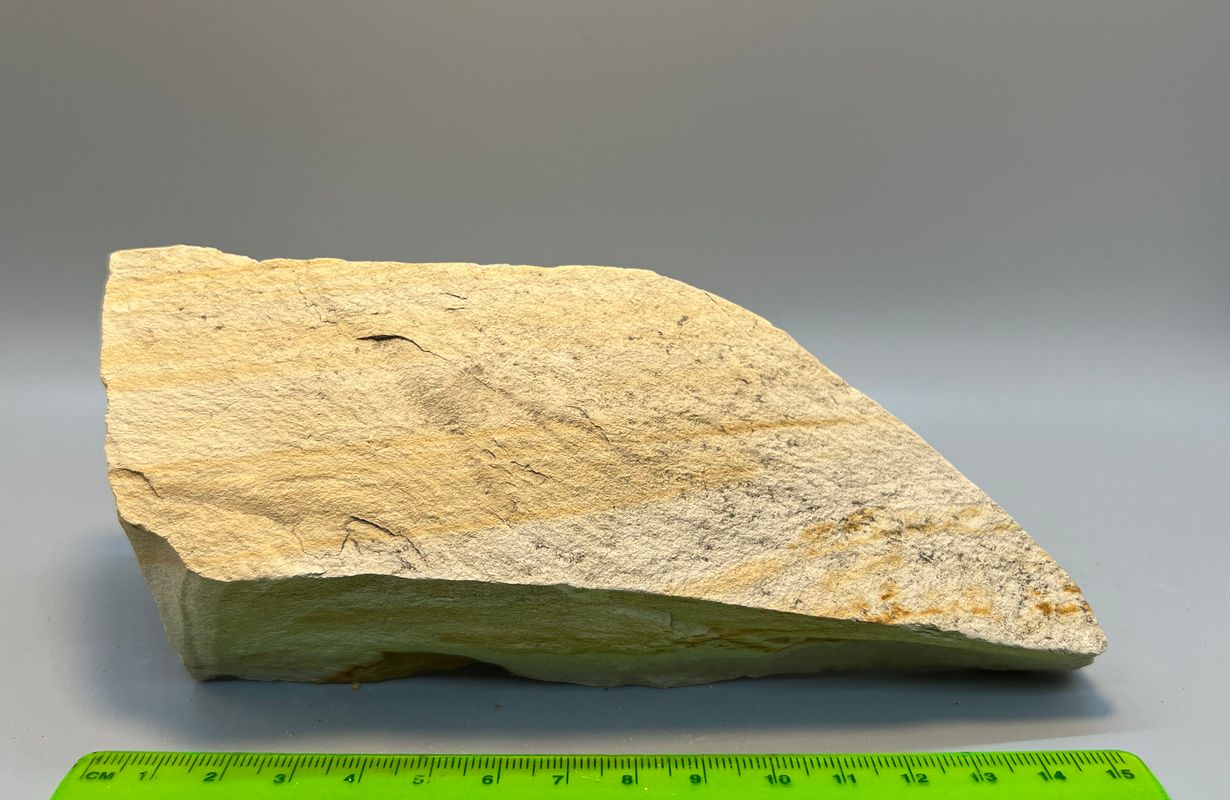
What is siltstone? Siltstone is a sedimentary rock composed mainly of silt-sized particles. These particles are finer than sand but coarser than clay. Siltstone forms from the compaction and cementation of silt, often in riverbeds, lakes, or shallow marine environments. Unlike shale, which splits into thin layers, siltstone breaks into blocky pieces. Its color varies from gray to brown, depending on the minerals present. Siltstone is less common than sandstone or shale but still plays a significant role in geology. It can tell us a lot about Earth's history, including past climates and environments.
What is Siltstone?
Siltstone is a sedimentary rock that forms from silt-sized particles. It’s often found in ancient riverbeds, deltas, and lake bottoms. Let’s dive into some fascinating facts about this unique rock.
- Siltstone is primarily composed of silt-sized particles, which are smaller than sand but larger than clay.
- It often appears in shades of gray, brown, or reddish-brown due to the presence of iron oxides.
- Siltstone forms in environments where water slows down enough to deposit silt, such as riverbanks and lake beds.
- Unlike sandstone, siltstone has a finer grain size, making it smoother to the touch.
- It is less common than sandstone and shale but more common than claystone.
Formation and Composition
Understanding how siltstone forms and what it’s made of can give us insight into its characteristics and uses.
- Siltstone forms through the compaction and cementation of silt particles over millions of years.
- The primary minerals in siltstone are quartz and feldspar, with minor amounts of clay minerals.
- It often contains organic material, which can give it a darker color.
- Siltstone can also include small fossils, providing clues about ancient environments.
- The cementing material in siltstone is usually silica, calcite, or iron oxides.
Uses of Siltstone
Siltstone has various applications, both practical and decorative. Here are some ways it’s used.
- Siltstone is often used as a building material, especially in areas where it’s readily available.
- It can be polished and used for decorative purposes, such as countertops and tiles.
- In landscaping, siltstone is used for garden paths, retaining walls, and decorative boulders.
- It’s also used in the construction of roads and as a base material for foundations.
- Siltstone can be crushed and used as an aggregate in concrete and asphalt.
Geological Significance
Siltstone plays an important role in understanding Earth’s geological history. Here’s why.
- Siltstone layers can indicate past environmental conditions, such as the presence of ancient rivers or lakes.
- The grain size and composition of siltstone can reveal information about the speed and direction of ancient water currents.
- Fossils found in siltstone can provide valuable information about the plants and animals that lived millions of years ago.
- Siltstone can also help geologists understand the processes of sedimentation and erosion.
- It’s often used in stratigraphy to correlate the ages of rock layers across different regions.
Interesting Facts
Here are some more intriguing tidbits about siltstone that you might not know.
- Siltstone can sometimes be mistaken for shale, but it doesn’t split into thin layers like shale does.
- It’s more resistant to weathering than shale, making it more durable in outdoor environments.
- Siltstone can be found on every continent, making it a truly global rock.
- Some siltstone formations are famous for their unique colors and patterns, attracting geologists and tourists alike.
- In some cultures, siltstone has been used to create tools and artifacts, showcasing its versatility.
Siltstone in Popular Culture
Siltstone might not be as famous as granite or marble, but it has made its mark in various ways.
- Siltstone has been featured in several geological documentaries, highlighting its importance in Earth’s history.
- It’s often used in educational settings to teach students about sedimentary rocks and geological processes.
- Some artists use siltstone as a medium for sculptures and other artworks.
- Siltstone formations are popular destinations for hikers and nature enthusiasts.
- It has even been mentioned in literature and poetry, symbolizing endurance and the passage of time.
Fun Facts
Let’s wrap up with some fun and quirky facts about siltstone.
- Siltstone can sometimes contain tiny crystals that sparkle in the sunlight, adding a touch of natural beauty.
- It’s often used in aquariums to create natural-looking landscapes for fish and other aquatic creatures.
- Some siltstone formations are millions of years old, making them ancient witnesses to Earth’s history.
Siltstone's Fascinating World
Siltstone, often overlooked, holds a treasure of geological wonders. This sedimentary rock, formed from fine silt-sized particles, tells stories of ancient rivers, lakes, and oceans. Its composition and formation reveal much about Earth's history, making it a key player in geology.
From its uses in construction to its role in fossil preservation, siltstone proves its worth. It's not just a rock; it's a window into the past. Geologists and enthusiasts alike find value in studying its layers, each one a chapter in Earth's story.
Whether you're a student, a professional, or just curious, siltstone offers a rich field of exploration. Next time you see this humble rock, remember the secrets it holds and the history it represents. Siltstone, with its unique characteristics, truly rocks!
Was this page helpful?
Our commitment to delivering trustworthy and engaging content is at the heart of what we do. Each fact on our site is contributed by real users like you, bringing a wealth of diverse insights and information. To ensure the highest standards of accuracy and reliability, our dedicated editors meticulously review each submission. This process guarantees that the facts we share are not only fascinating but also credible. Trust in our commitment to quality and authenticity as you explore and learn with us.
